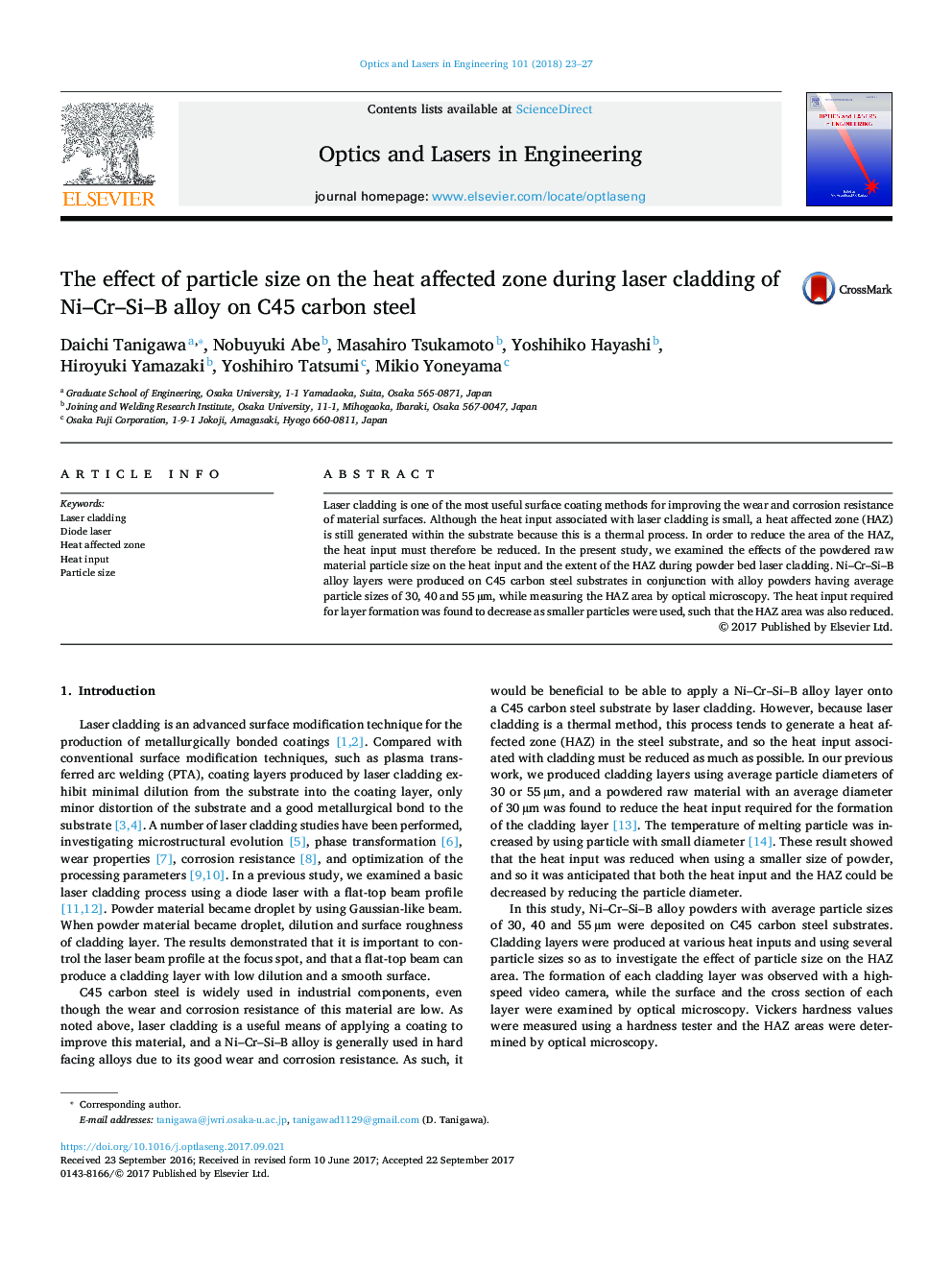| Article ID | Journal | Published Year | Pages | File Type |
|---|---|---|---|---|
| 5007656 | Optics and Lasers in Engineering | 2018 | 5 Pages |
Abstract
Laser cladding is one of the most useful surface coating methods for improving the wear and corrosion resistance of material surfaces. Although the heat input associated with laser cladding is small, a heat affected zone (HAZ) is still generated within the substrate because this is a thermal process. In order to reduce the area of the HAZ, the heat input must therefore be reduced. In the present study, we examined the effects of the powdered raw material particle size on the heat input and the extent of the HAZ during powder bed laser cladding. Ni-Cr-Si-B alloy layers were produced on C45 carbon steel substrates in conjunction with alloy powders having average particle sizes of 30, 40 and 55â¯Âµm, while measuring the HAZ area by optical microscopy. The heat input required for layer formation was found to decrease as smaller particles were used, such that the HAZ area was also reduced.
Related Topics
Physical Sciences and Engineering
Engineering
Electrical and Electronic Engineering
Authors
Daichi Tanigawa, Nobuyuki Abe, Masahiro Tsukamoto, Yoshihiko Hayashi, Hiroyuki Yamazaki, Yoshihiro Tatsumi, Mikio Yoneyama,
